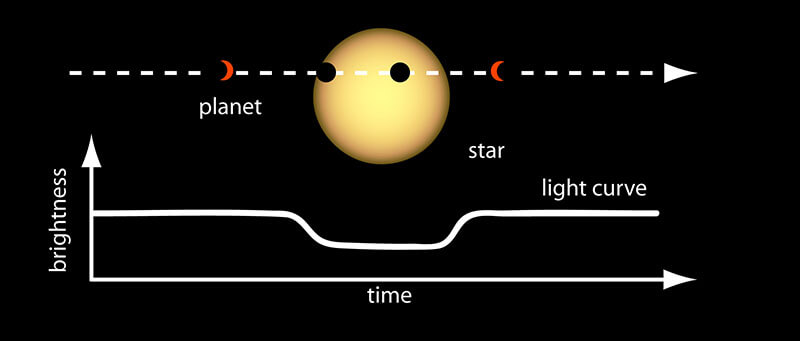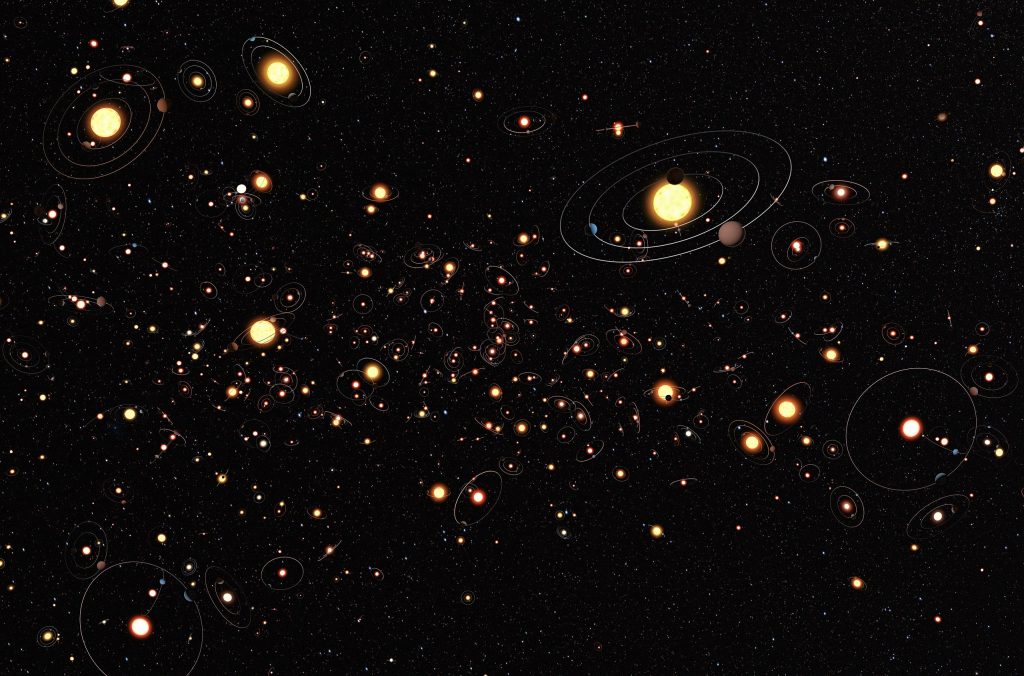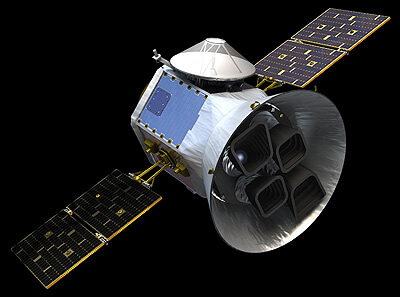SETI Institute + Unistellar Citizen Science
Exoplanet Transits
An extrasolar planet – better known as an exoplanet – is a distant planet orbiting a star other than our Sun. They can come in all shapes and sizes, and as of 2024, NASA reports that nearly 6,000 exoplanets have been confirmed. There are several different ways to detect exoplanets, but the Unistellar Network focuses on one in particular – the transit method.
What is an Exoplanet Transit?
As exoplanets orbit their parent star, they may pass – or transit – in front of that star as seen from Earth. As it transits, the exoplanet blocks out a fraction of the star’s light. This small change in the star’s light can be observed by space scientists and Unistellar Citizen Astronomers to detect exoplanets and tell us more about their orbits. Equipped with Unistellar telescopes, Citizen Astronomers can confirm even more of these alien worlds!


Distant Worlds
Exoplanets come in all shapes and sizes: there’s Hot Jupiters, Cold Jupiters, and even Super Earths, which are rocky planets bigger than Earth but smaller than Neptune. Because exoplanetary systems are so diverse, they can teach us more about how our own Solar System formed. By understanding the other worlds out there, we can better deduce how common the conditions for life are in our galaxy.

Nasa Partner
Unistellar Citizen Scientists are official NASA partners who provide vital information about candidate exoplanets discovered by the Transiting Exoplanet Survey Satellite (TESS). These Jupiter-sized planets take so long to pass their star that it is impossible for any single, earth-bound telescope to witness their entire transit due to the rising Sun. That means that the Unistellar Network, with its telescopes in every timezone across the globe, is uniquely qualified to help NASA’s cause.
If you’re interested in joining these NASA-specific missions, visit the UNITE page.


Your Contribution
Exoplanet transits happen at least once a night, so there is always something to observe. From your observations of these foreign planets, we can extract important information about their size and orbit, which tells scientists what conditions may be like on these distant worlds!
To start hunting exoplanets, visit our Scientific Event Predictions page to see what events are visible to you. Head to the Tutorial page for guidance on how to master your Unistellar telescope. The exciting results from Citizen Astronomers’ observations of exoplanets are posted on the Results page, so you can see what kind of discoveries you will be making!


